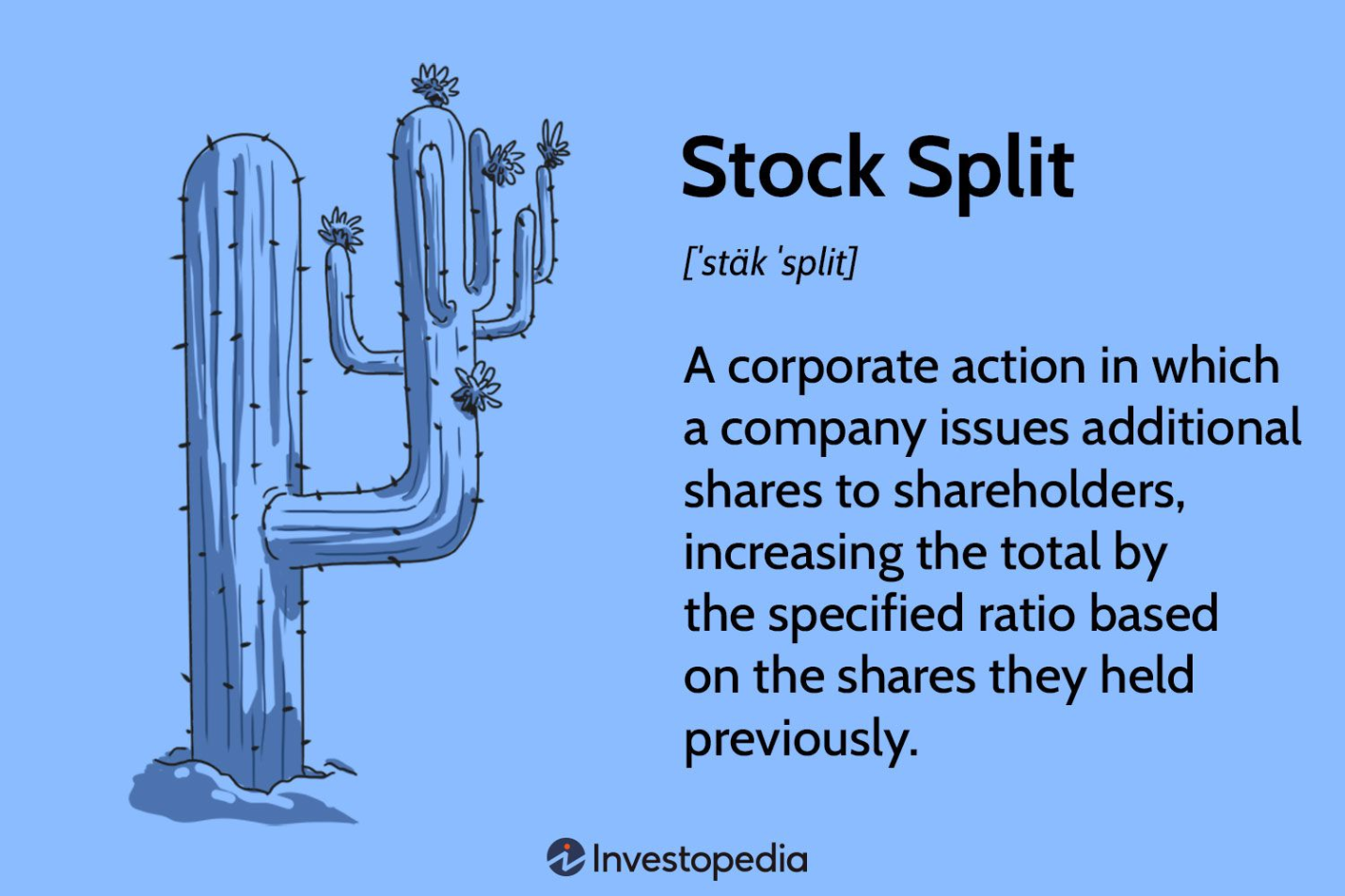Description

Copyright infringement not intended
Picture Courtesy: www.investopedia.com
Context: Stock splits are routine corporate actions where a company divides its existing shares into multiple shares, reducing the price per share without changing its market capitalization.
Stock Split
About
- A stock split occurs when a company divides its existing shares into multiple shares, altering the nominal value of its stock without affecting its market capitalization.
- Stock splits are typically expressed as a ratio, such as 2-for-1, 3-for-1, or any other combination. In a 2-for-1 split, for instance, shareholders receive two shares for every share they previously owned. While the overall value of the investment remains the same, the price per share decreases proportionally.
- The primary goal of a stock split is to reduce the stock price, making it more accessible to a broader range of investors.

Motives Behind Stock Splits
- By reducing the share price, stock splits enhance liquidity, making it easier for investors to buy and sell shares. Increased liquidity can lead to a more active and efficient market.
- Lower stock prices make shares more affordable for individual investors, encouraging broader participation in the market. This accessibility often attracts retail investors, thereby diversifying the shareholder base.
- Lower stock prices can create a positive psychological impact on investors. Individuals may perceive a lower-priced stock as more affordable and attractive, leading to increased demand.
- Companies often execute stock splits to signal confidence in their future performance. A split can convey the message that the company anticipates sustained growth, bolstering investor confidence.
- Stock splits can lead to adjustments in options and derivatives contracts, ensuring continuity and preventing market disruptions.
Implications for Investors
- Stock splits do not have immediate tax implications for investors. However, when shares received through a split are eventually sold, capital gains taxes apply based on the adjusted cost basis, considering the split ratio.
- While the stock price decreases after a split, the dividend yield (dividends per share divided by the stock price) remains unaffected. Investors often view a stable or growing dividend yield positively.
- Stock splits can influence investor perception of a company's value. While the intrinsic value of the investment remains constant, a lower stock price might attract more investors, potentially driving up the stock price in the long run.
- Stock splits can lead to short-term price fluctuations. The market's reaction to a split can be influenced by investor sentiment, market conditions, and the company's overall performance.
- Studies suggest that while stock prices often experience a short-term surge after a split due to increased demand, the long-term impact on stock performance is uncertain. Investors should consider the company's fundamentals and market conditions when making investment decisions post-split.
Market Dynamics and Investor Behavior
- Stock splits challenge the Efficient Market Hypothesis, as the price adjustment does not correspond to any fundamental change in the company's value. This anomaly allows researchers to study investor behaviour and market inefficiencies.
- Behavioral finance theories propose that investors might overreact to positive news of a split, leading to a temporary price surge, or underreact, resulting in undervaluation. These behavioural biases can create trading opportunities for savvy investors.
- Institutional investors, such as mutual funds and pension funds, often adjust their portfolios in response to stock splits. Understanding their strategies can provide insights into market trends and investor sentiment.
- Stock splits can trigger algorithmic trading strategies. Automated algorithms are programmed to detect and exploit market anomalies, potentially amplifying price movements during and after a split.

Conclusion
- A stock split is a corporate action that divides existing shares into multiple new shares, often to make them more affordable for investors. This can lead to increased liquidity and trading activity, attracting a broader investor base. However, it does not change the overall market capitalization or the underlying value of the company. Stock splits are a strategic tool used to manage share prices and enhance accessibility for investors.
|
PRACTICE QUESTION
Q. What is the role of the Securities and Exchange Board of India (SEBI) in regulating and overseeing the Indian securities market, and what are some key initiatives or regulations that SEBI has implemented to ensure investor protection and market integrity?
|













